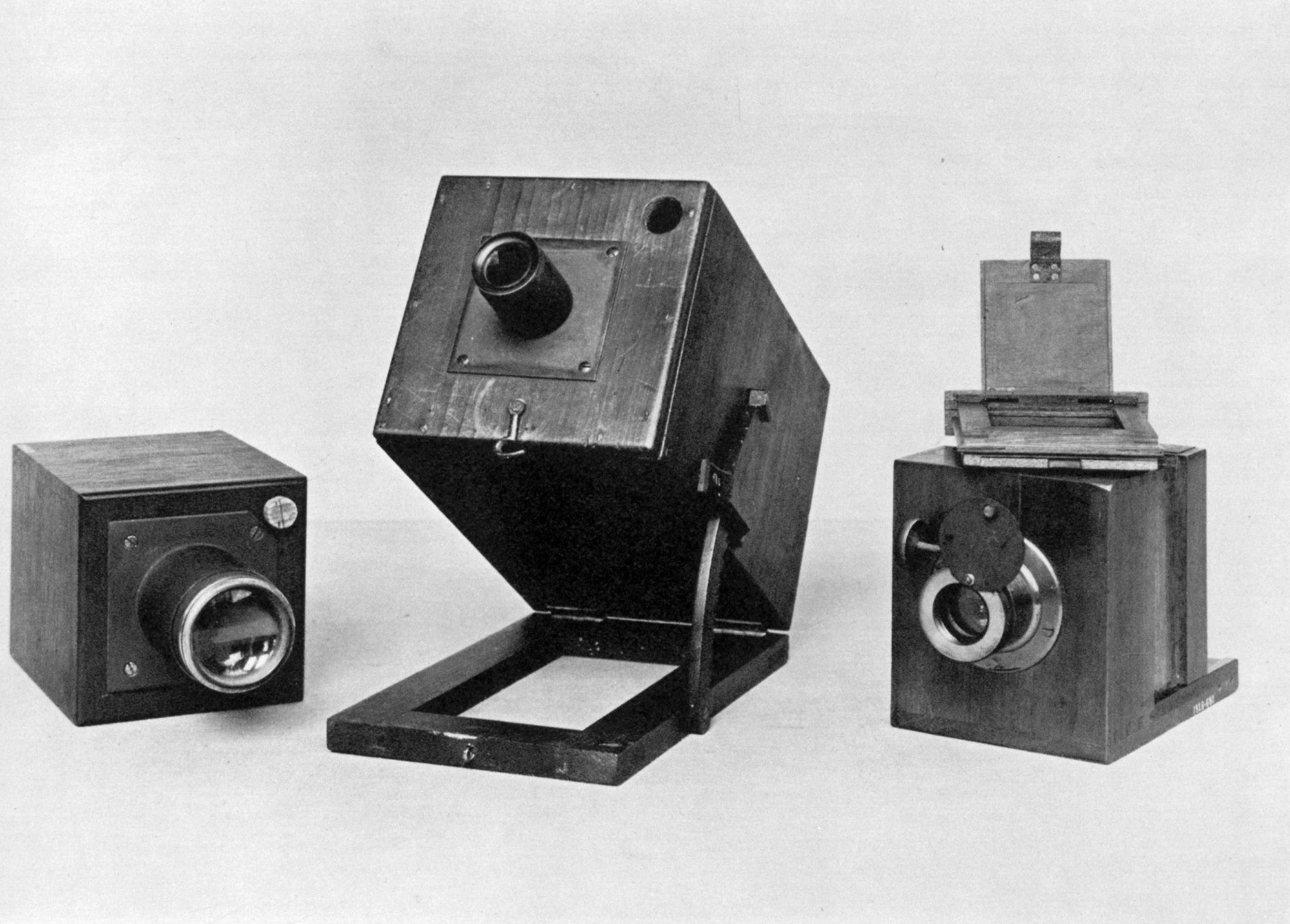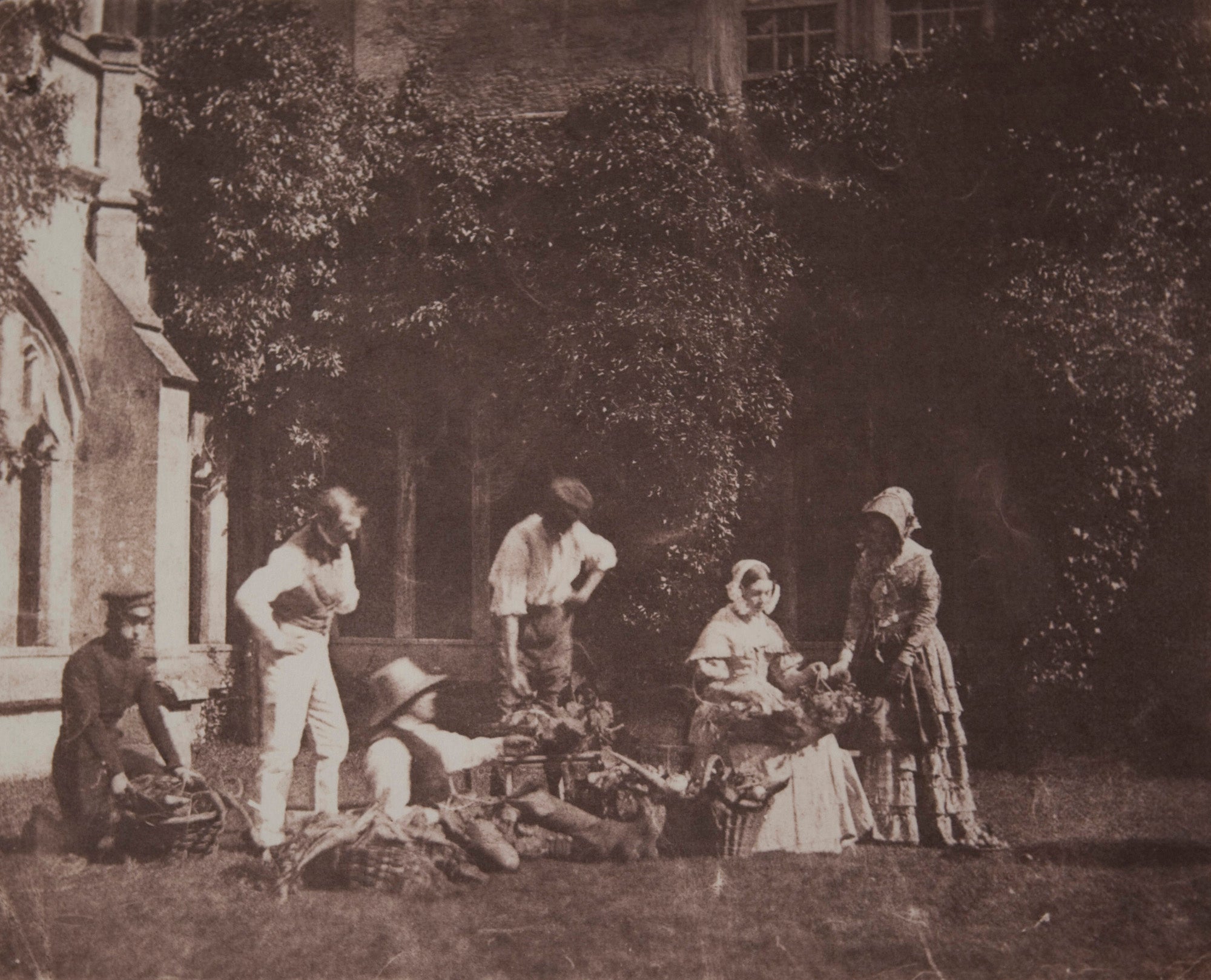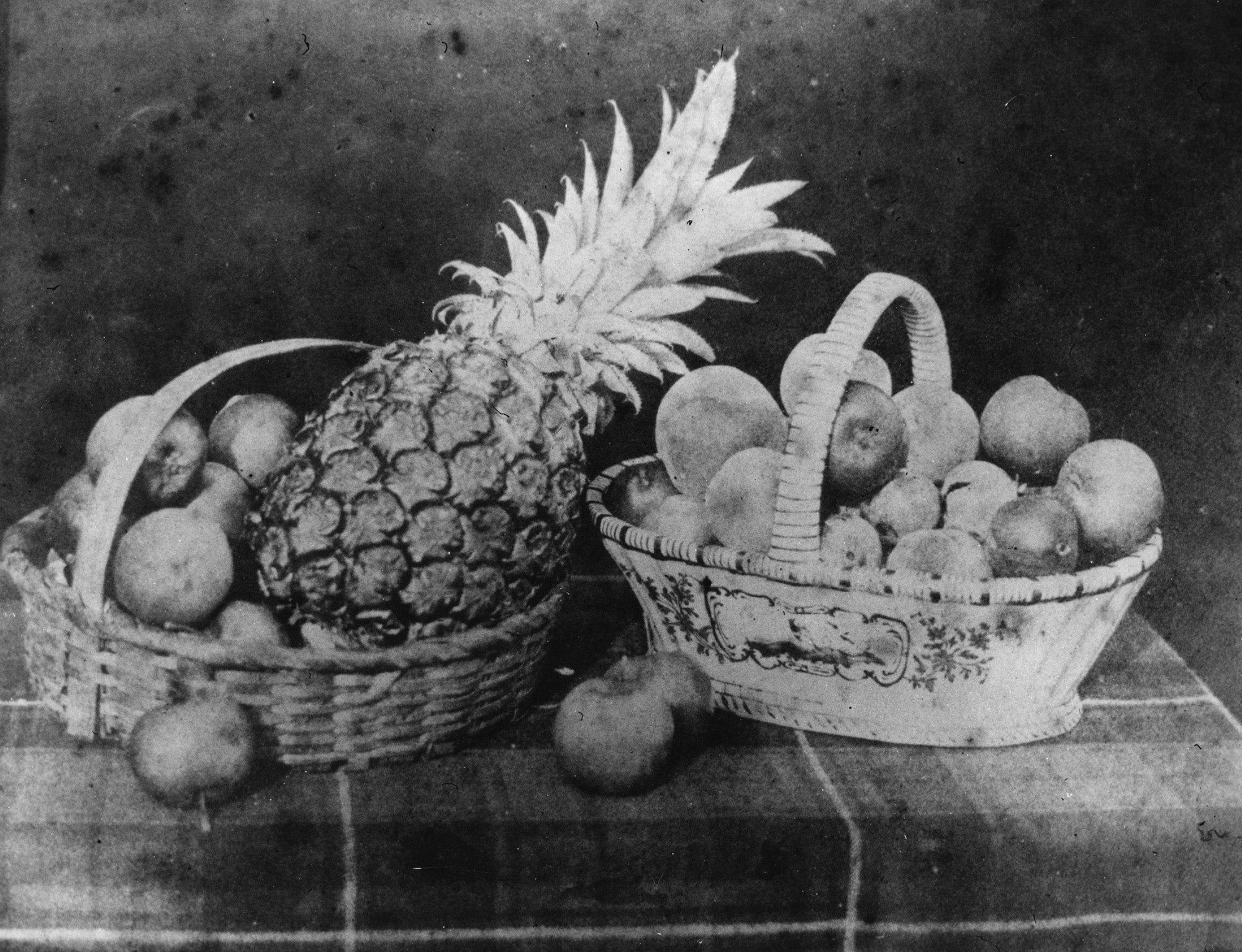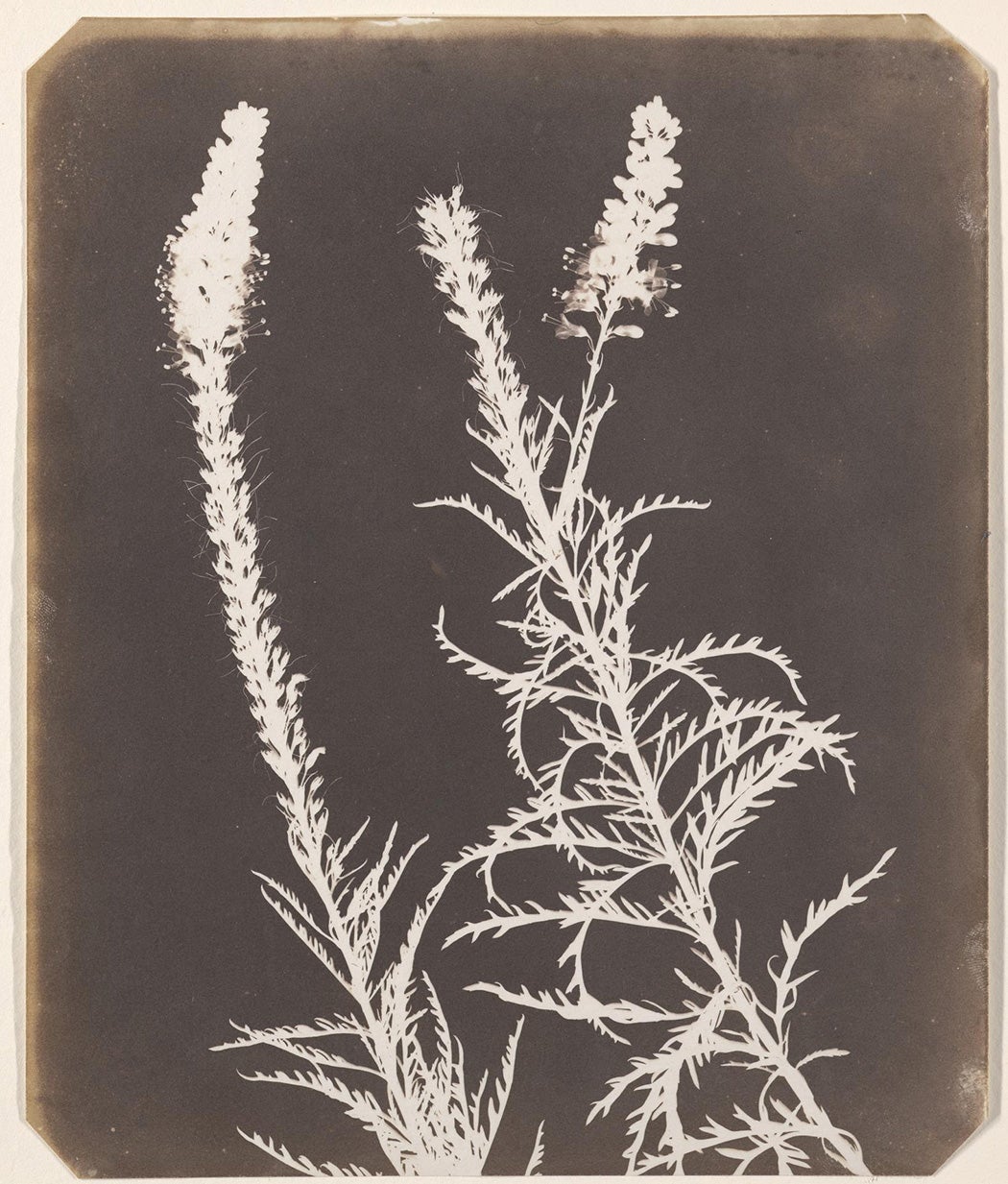In 1839, Louis-Jacques-Mandé Daguerre, a Frenchman, invented a process for capturing images on silvered copper plate. He made an impression; his name is a singular stand-out in the annals of early photography. But he was not a lone pioneer. Considerably less well known—in his native UK especially—is William Henry Fox Talbot, a contemporary whose calotype process ushered in the age of positive-negative photography, an innovation that was arguably more influential than even the daguerreotype.
“England has given very little attention to its own inventor,” says Geoffrey Batchen, professor of the history of art at the University of Oxford. Batchen is the curator of Bright Sparks: Photography and the Talbot Archive, an exhibition earlier celebrating Oxford’s acquisition of Talbot’s archive that ran earlier this year. “I’ve always found it puzzling.”
Batchen, the first historian of photography at Oxford, hopes that Bright Sparks will start the overdue process of setting things right and contextualize Talbot’s pioneering work in the history of photography.
Talbot was in his thirties when he began experimenting with a process to capture images on paper, according to the Metropolitan Museum of Art Bulletin. Already an accomplished natural scientist, he was a fellow of the Astronomical, Linnean, and Royal Societies and had published four books and twenty-seven scholarly articles on topics ranging from mathematics to Egyptology to botany and philosophy. “He was one of these polymathic figures, not uncommon at the time,” says Batchen.
It was exactly this breadth of activity, however, “that enabled Talbot to evolve a practical method for the reproduction and replication of images and to project its use for artistic as well as scientific purposes,” writes Ellen Sharp in the Bulletin of the Detroit Institute of Arts.

Having used drafting aids such as the camera obscura and camera lucida—devices that superimpose an image on a surface ready to be traced by an artist—Talbot was inspired to find a way to enable “these natural images to imprint themselves durably, and remain fixed upon the paper,” the MMAB writes, quoting Talbot.
Coating writing paper with salt and a solution of silver nitrate that darkened when exposed to light, Talbot used miniature cameras to record details of the architecture of Lacock Abbey, his ancestral home. His few surviving images from that era are ghostly and strange—consider “The Oriel Window, Lacock Abbey” in the MMAB article—their tones reversed so that what should be light is dark and vice versa. The sight of them, back when the only way of capturing a scene was to draw or paint it, must have been absolutely thrilling.
That was in 1835 but it wasn’t until early 1839 that Talbot shared what he called his “art of photogenic drawing,” prompted by the announcement of Daguerre’s discovery of his own, very different method of image capturing. “Talbot gave [his process] free to the whole world like a good scientist,” says Batchen. In Talbot’s paper to the Royal Society, says Batchen, “He described all its many applications, and he told you how to do it. He gave you all the formulas and anybody could go and make it.”
Weekly Newsletter
In August of that year, Daguerre published the particulars of his own process, and sold his patent to the French government in exchange for a lifetime pension. The state made his process available to the people of France, and Daguerre retired from both inventing and photography; he spent the rest of his days painting.
Talbot, meanwhile, kept working. By 1841 he had come up with the ‘calotype process,’ from the Greek word ‘kalos’, meaning beautiful. It enabled the creation of a photographic negative from which positive prints could be taken.

“‘I have named the paper thus presented Calotype paper on account of its great utility in obtaining the pictures of objects with the camera obscura,’” he said, as quoted by Ellen Sharp, who notes, that “With his improved process, Talbot had reduced exposures from an hour to a few minutes, or even seconds, depending on the strength of the sun.”
Rather than offering this discovery (what Geoffrey Belknap, head curator at the UK’s National Science and Media Museum, has called “a critically important innovation in photographic history”) to the world for free, Talbot took a different approach. Just as Daguerre had done, Talbot took out a patent on the calotype process, hoping to earn a living in perpetuity from his ingenuity.
Talbot was a member of the landed gentry. He had benefited from the best education and had won election to Parliament. Still, “he had known financial uncertainty,” Batchen says. “His father died when he was very young and for a while he and his mother had to live in the spare rooms of relatives. Then she remarried which considerably enhanced their personal circumstances, but Talbot only then regained control of the family home, which had been rented out, in the early 1830s.”
Alas, Talbot’s gambit failed. Firstly, as Iwan Rhys Morus writes, taking out a patent was expensive, typically costing “well over a hundred pounds [over £8,000 in today’s money] to secure rights in England and Wales and requiring extra expense to cover Scotland and Ireland.” Secondly, says Batchen, the calotype “proved to be commercially unsuccessful compared to the daguerreotype when it came to the making of portraits.”
Less reliable than Daguerre’s technique in capturing images, calotypes faded. Talbot only sold two licenses for his process and granted its use at the Reading Establishment, a photographic printing business run by his former valet, Nicolaas Henneman, which Talbot staked. Neither the Reading Establishment nor the businesses which bought licenses made money.
“No one with managerial and business skills was in charge,” Sharp observes. “Talbot simply had no talent for commerce and promotion.” Despite publishing The Pencil of Nature, the world’s first book illustrated with photographs (an achievement comparable with that of the Gutenberg Bible in printing, according to the late photography historian Beaumont Newhall), the business failed and closed down in 1847.
Talbot also lost money defending his patents (he took out a number over the years) in court. He sued a London gallerist, for example, in 1852 for selling photographs on paper created using his technique, and never won any official recognition from the government, as did Daguerre in France. “The irony of this omission was that Daguerre’s process became obsolete while Talbot’s laid the foundation for modern photography,” Sharp says. “He never received any substantial financial rewards for his invention.”

The rest of the English photography community, meanwhile—a community comprising largely “amateur enthusiast[s],” writes A. J. Stirling in the Journal of the Royal Society of Arts—was irritated by Talbot’s unwillingness to share his discovery.
“The formative years of photography […] saw developments in photography largely carried out by non-professionals,” Stirling says. “Indeed almost all the major early technical developments and discoveries in photography resulted from experiments carried out by amateurs and there were practically no professionals practising photography in the country.”
When Talbot acted to restrict innovation through the use of a patent, “strong passions were aroused […] Considerable controversy had surrounded [Talbot’s process] since the first patent was taken out in 1840 and it was felt by many at the time that patent restrictions had prolonged the amateur status of photography unduly and retarded its development.”
Photographers in England were also irked by the fact that Talbot’s patent included “improvements that were not all of his own invention,” as Stirling puts it. “Professor Robert Hunt of the School of Mines and the great authority on photography was critical of Talbot for adopting the discoveries of others on which his own patent was to apply, and he wrote ‘at this stage of the invention the tracks of the numerous exploring parties run too close to each other to be clearly identified’.”

In France, by contrast, Talbot’s patent was entirely unrecognized; experimentation there thrived. So too in Scotland.
Back in England, photographic innovation was able to begin at scale only after 1852, prompted by a bizarre decision from the organizing committee of the Great Exhibition of 1851 to hire foreign— specifically French—photographers to document this otherwise fervidly patriotic event.
“The embarrassment was such that the organising committee and members of the photographic community approached Talbot and begged him to loosen the patent rights so that other people could innovate the process,” Batchen explains. “Talbot was persuaded to do so and as a result, the process suddenly became far more popular. Photographic societies and amateur photographers were keen to promote this paper-based process. Suddenly, people were free to innovate.”
Such was the enthusiasm for Talbot’s process that when the Society of Arts presented its first exhibition of photography, in 1852, there were 800 photographs on display, the majority of them calotypes.
Part of the reason that Talbot agreed to finally loosen patent restrictions, suggests Batchen, was because he had long moved on to other obsessions. By 1846, he had largely abandoned photography, after the Reading Establishment entirely botched a large run of photographs.
“It was a huge public relations disaster for Talbot,” Batchen says. “He never made another photograph.” Instead, he dedicated his energies to an etching-based photographic printing process he dubbed ‘photoglyphic engraving’—an important step towards establishing the processes that allowed photographic images to be mechanically copied in newspapers and magazines in the early twentieth century.
Talbot’s inflexibility regarding his patent was to his disadvantage in myriad ways. Had he allowed others to experiment with his innovation, his would be a household name today. And had he lived in France, where state support for innovation was the norm, rather than Britain, where innovation was at the mercy of market forces, Talbot’s trajectory would likely have been far different.
The history of photography is “determined not just by scientific invention, but by all sorts of other factors, social, class, cultural, economic and political, all of these things have a role,” Batchen says. “It’s not entirely a straightforward story.”
Support JSTOR Daily! Join our new membership program on Patreon today.







